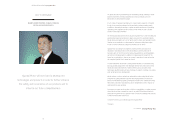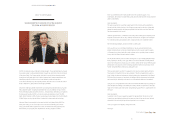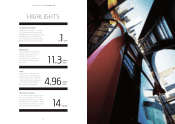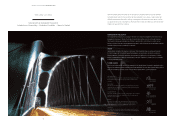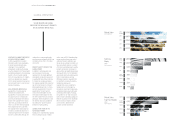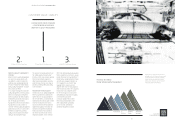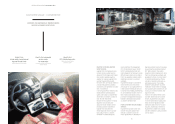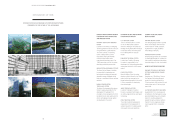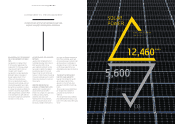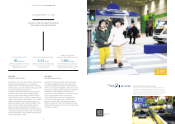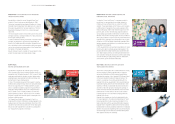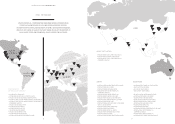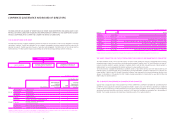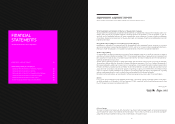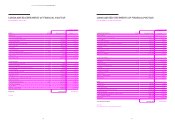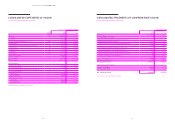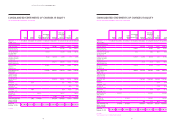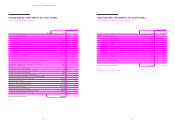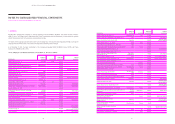Hyundai 2015 Annual Report Download - page 36
Download and view the complete annual report
Please find page 36 of the 2015 Hyundai annual report below. You can navigate through the pages in the report by either clicking on the pages listed below, or by using the keyword search tool below to find specific information within the annual report.
The Asan Plant generated 12,460 MWh
of renewable electricity in 2015 using its
rooftop solar system.
The 10MW rooftop solar generation
system can reduce GHG emissions by
5,600 tons per year.
12,460MWh
SOLAR
POWER
5,600t
CO2
NEW MATERIALS AND TECHNOLOGIES
FOR A NEW GENERATION OF GREEN
CARS
Hyundai Motor has demonstrated
its technological capability with the
development of a three way catalytic
converter which meets California’s
stringent SULEV standard.
Hyundai Motor has been developing
lightweight design technologies to
improve quality in terms of fuel
efficiency to reduced emissions.
We are also developing bio plastics,
using plant-based materials, which are
already being applied in some models.
Bio plastics can contribute to as much
as a 40 percent reduction in lifetime CO2
emissions compared to regular plastics
made using petroleum. Sustained efforts
in the development of green materials
and new technologies will accelerate the
transition to a clean car era.
MINIMIZING WASTE AND MAXIMIZING
RECYCLING
Hyundai Motor established the first
Automobile Recycling Center in Korea
which processes 4,200 cars per
year. Significant investment has also
been made to minimize the negative
environmental impact of cars at all
stages of their life cycle. Efforts will
continue to further increase the amount
of recycled automobile parts in order to
retrieve more materials for reuse and
reduce waste.
REDUCING GREENHOUSE GAS
EMISSIONS AT PRODUCTION PLANTS
Hyundai Motor is working hard to
reduce GreenHouse Gas (GHG)
emissions at all stages of its operations
including purchasing, logistics,
production, sales and service.
Since 85 percent of GHG emissions
are from production plants, we are
introducing a number of measures at
our plants, including the installation of
high efficiency facilities, waste heat
recovery and energy conservation. We
are also working on transitioning to
renewable energy. Our effort will help
us effectively respond to the ever-
strengthening GHG emissions reduction
policy.
THE WORLD’S SECOND LARGEST
ROOFTOP SOLAR GENERATOR
Hyundai Motor installed the world’s
second largest solar electricity
generator at its Asan Plant, which
generated 12,460 MWh of electricity
in 2015.
This is enough to power 3,800 homes
for one year and contributes to
a reduction in GHG emissions of
5,600 tons.
The solar generator brings additional
environmental benefits because it was
built on the rooftop without destroying
nature.
HYUNDAI MOTOR IS SETTING NEW STANDARDS IN CLEAN CARS
BASED ON MAXIMIZING ENVIRONMENTAL CREDENTIALS.
COMMITMENT TO THE ENVIRONMENT
HYUNDAI MOTOR COMPANY Annual Report 2015
70 71



